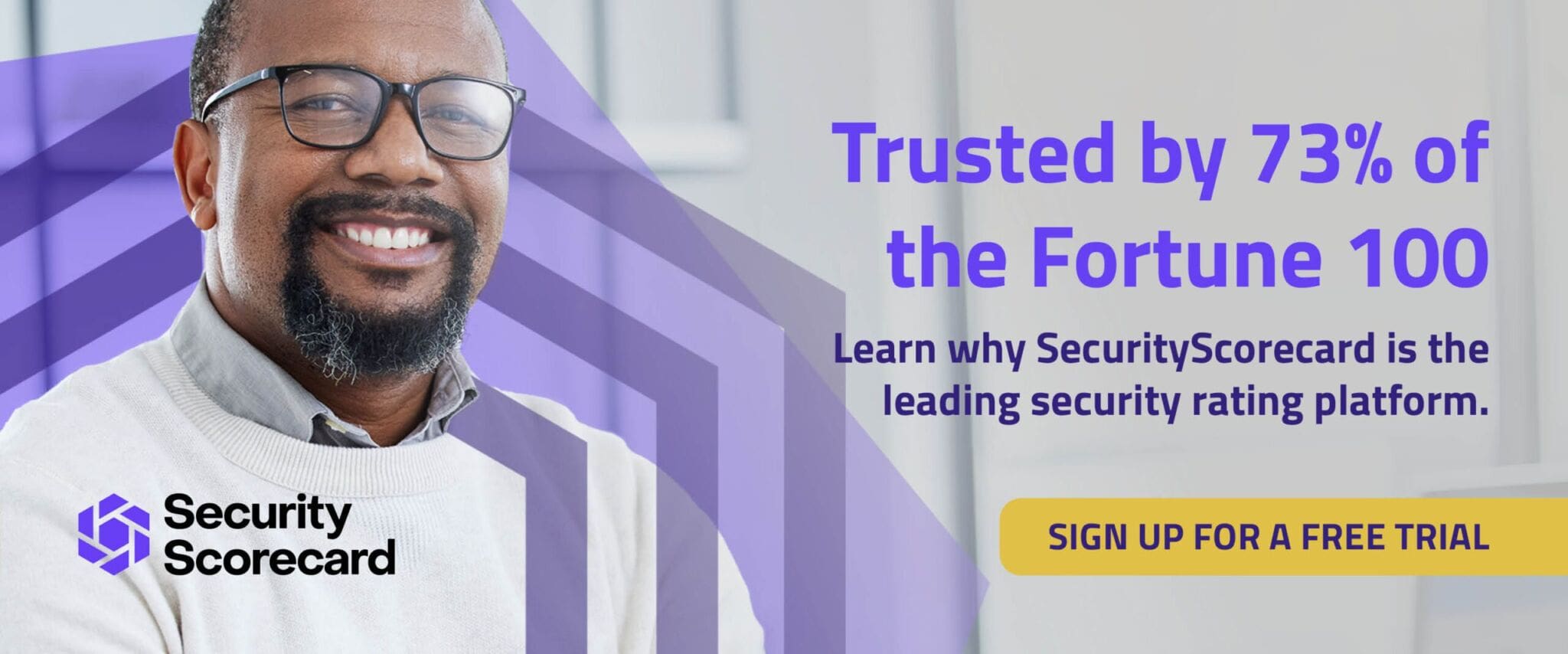Calculating the ROI of Security Ratings.
Calculating the return on investment (ROI) of any cybersecurity investment can be both overly simple and very complicated.
While a good rule of thumb is to multiply the average cost of a data breach by the number of breaches an organization might reasonably expect within a certain amount of time, that formula fails to account for some of the ways more specific security measures — like security ratings — can save an organization money before a breach even happens.
Security ratings are much like FICO credit scores — having a high rating can lower premiums, make business transactions go more smoothly, and give business associates and investors confidence in your organization’s ability to secure your data. All of that means that even when you don’t factor in the breaches you’ve prevented, an investment in security ratings is paying off in other ways.
How can you prove the ROI of security ratings?
It can be difficult to show leadership metrics that prove that you’re saving money because of incidents that haven’t happened. Fortunately, there are a number of qualitative ways to prove to your board and investors that your investment in security ratings is saving your paying off.
1. Save on personnel costs
In the current economic climate, personnel costs make up the bulk of most company’s expenses. It’s also difficult to find solid cybersecurity professionals, who are a rarity in the job market. Security ratings are a way for smaller companies to bulk up small security teams, for large companies to cut costs, and for all companies to do more with less. They allow organizations to continuously monitor evolving cyber threats — something that might be difficult for a small cyber team to handle. Security ratings make such monitoring more scalable for teams of all sizes.
2. Streamline your third-party risk management program
Third parties are necessary in the current economy but they come with risk that needs intensive management. Security ratings and smart tools like SecurityScorecard’s Atlas automate much of the busywork associated with Third-Party Risk Management (TPRM), enabling your organization to run your TPRM program with a smaller, more efficient team.
3. Save on cyber insurance
Data breaches are a huge risk — the average breach costs a company $3.92 million, according to the Ponemon Institute. To mitigate this risk, many companies are purchasing cyber insurance. While those premiums can be expensive, there is a way to reduce them — security ratings. If you’re using a good security ratings platform, and you’re highly rated, your premiums are likely to be reduced. Why? By earning and maintaining good ratings, you’ve proved that you’re a good risk.
4. Make for a smoother transition during mergers and acquisitions
During the due diligence process for mergers and acquisitions, a high cybersecurity rating is likely to make things easier for your organization as well — if your organization has A or B cybersecurity ratings, outside auditors, bankers, and regulators, are likely to be more comfortable during the due diligence process if you can prove your organization is a good risk upfront.
5. Give the board insight into your security posture
Security scores can also provide a window into the company’s security for internal stakeholders. SecurityScorecard’s board-level report can help a board, or other investors, understand their company’s risk as compared to other similar companies in the industry. By having a rating platform, you’re providing comfort to all of these constituencies.
6. Prove to financial lenders that you’re a good risk
Security ratings may also help an organization interested in borrowing money. While security ratings are not credit scores, data breaches are tied to finance. The organization that suffers a data breach is often out millions of dollars, proving itself to be a bad financial risk, and that’s likely to scare investors away. If you can show your chance if a data breach is lower, you should be able to show your risk is lower. Someone would be more likely to invest in you if you have strong security.
How SecurityScorecard can help
If you’re interested in calculating the value of SecurityScorecard’s security ratings, our new calculator allows you to determine the economic benefit of SecurityScorecard Security Ratings for yourself before your organization invests in SecurityScorecard’s tools to manage your organization’s risk.
Our calculator is based on a Forrester Consulting study quantifying the Total Economic Impact and benefits of the SecurityScorecard security ratings platform. The study found that SecurityScorecard produces several key benefits for its customers, including accelerating the vendor risk assessment process, streamlining vendor procurement and onboarding, and increasing the productivity of the vendor account team.
Simply answer the questions in the calculator to learn what value our security ratings can be to your vendor risk management program.





